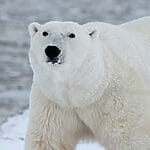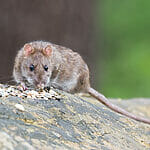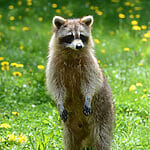When you think of animals walking, you might first picture those that move on all fours. But did you know there are several animals that walk on just two legs, much like humans?
This unique ability sparks curiosity: Why do these animals walk this way, and how does it benefit them?
In this article, we explore the amazing world of bipedal animals. From the well-known hop of kangaroos to the peculiar waddle of penguins, each animal has adapted to its environment in remarkable ways. We’ll uncover why some animals have two legs over four and how this ability helps them survive.
11 Animals That Walk On Two Legs
1. Penguins
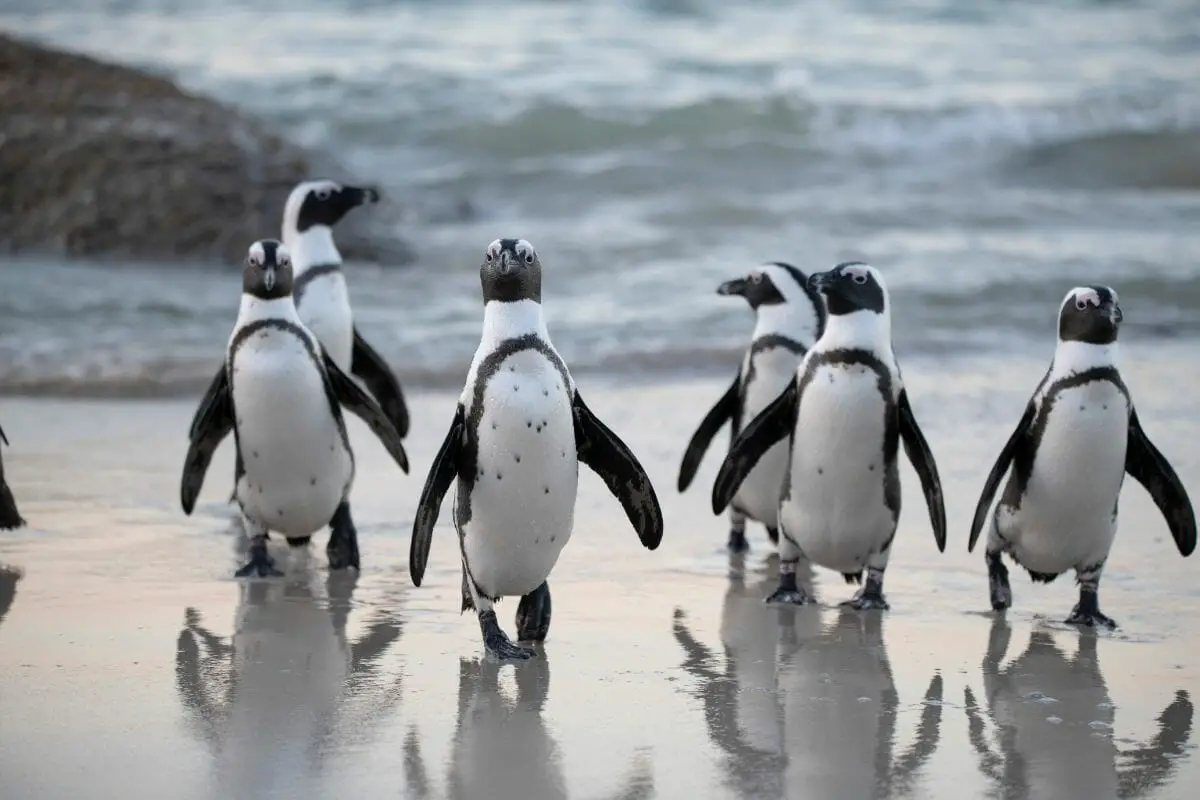
When discussing animals that walk on two legs, the first ones that come to many people’s minds are penguins. There’s a science-based clarification that answers why these cute animals walk on their two legs in such an amusing way.
That is that penguins do not walk, but rather waddle. They principally waddle because that helps them better with saving energy. Penguins are thought to be one of those animals that are extremely streamlined, meaning it reduces resistance when moving.
This does, however, mean that their bodies were not made to walk, so that is the reason why they have a funny walk.
On the other hand, their bodies are perfect for swimming, and they have been developed over time into excellent swimmers. In fact, they spend over 75% of their time underwater.
2. Kangaroos
Kangaroos are big two-legged creatures that hop on their feet and are indigenous to Australia and New Guinea.
The kangaroo’s powerful legs are its primary means of travel in the wild. Not only that but they are the biggest creatures that use hopping as their primary mode of transportation.
Kangaroos have four limbs, but only the rear ones are employed for walking. Because their front limbs are weaker, they are typically only utilized for slow crawling or moving on all fours.
Although kangaroos are animals that are incredibly athletic and can hop quite quickly and far, they are not capable of walking backward.
3. Kangaroo Rats
Now, this is an animal not many people know exists, but it does! Kangaroo rats are tiny rats capable of hopping like kangaroos, as their names suggest. These tiny desert rats have long, muscular legs and short, completely ineffective front legs.
Their strong legs allow them to keep moving quickly and leaping vast distances if necessary. Their leaps can be as high as 9 feet, and they will indeed hop that high, especially when pursued by predatory animals.
Kangaroo rats are found primarily in drier regions of North America. Yet, born and raised in deserts, to our surprise, kangaroo rats can survive without drinking water!
4. Flamingos
The name “Flamingo” derives from the Portuguese and means “flame-colored.” Flamingos are birds with long legs that live on the shore and can be found in swamplands and wetlands across all continents, apart from Antarctica and Australia.
Despite the fact that these creatures can fly, they are usually seen strolling on the ground instead of using the power of their wings as many other birds do.
So, you will typically see them walking on their two feet for most of the day. They are, nevertheless, also known for standing on only one of their legs for many hours, but there is little explanation for why that happens.
5. Ostriches
Ostriches are the tallest and heaviest birds in this world to this day. These huge creatures have two legs and their bodies can reach up to 9 feet in height and over 330 pounds in weight.
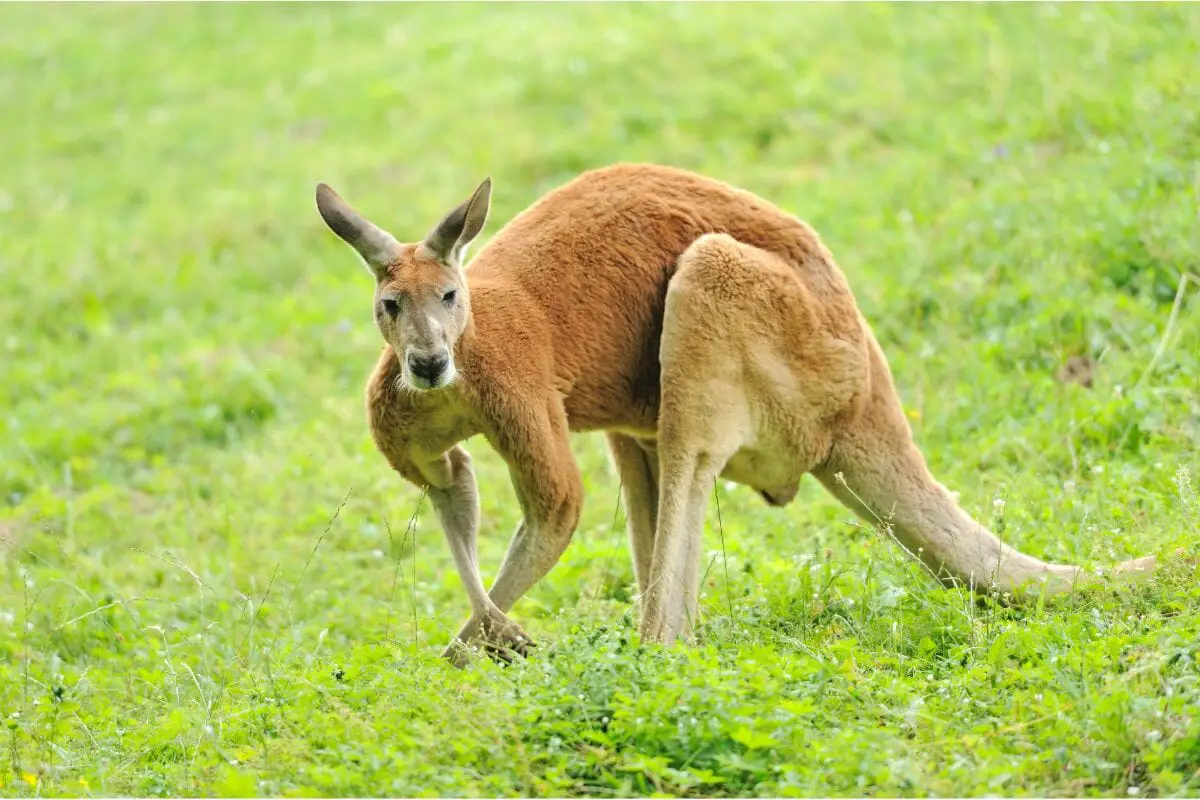
Their eggs are also the biggest ones in the entire bird kingdom, with their weight reaching 3.5 pounds! They can run at speeds of up to 43 miles an hour, and they depend on their legs and protracted necks to survive as a species since they lack the ability to fly.
Because of their ability to fly, ostriches have evolved through time and have learned how to walk and survive on land using only their legs for that, while performing the rest of their actions, like eating, with their long neck and beak.
Their limbs also function as defense weapons, as when threatened, ostriches employ their strong legs to kill predatory animals (see also: Animals That Kill For Fun)such as lions.
6. Gibbons
Gibbons are a fascinating group of primate species. They are apes living in Asia’s tropical and tropics and subtropics.
They primarily travel by swinging through the tree branches and can reach a speed of up to 34 miles an hour thanks to their long, muscular arms that enable them to easily do this.
As a matter of fact, they are the fastest and most dexterous of all tree-dwelling mammalian species!
Furthermore, gibbons can walk on two legs and not only on the earth’s surface but also over extremely narrow branches. Yet, they are incredible showmen and seldomly descend to the jungle ground
When they decide to come down, to keep their balance, gibbons also walk with their arms raised over their heads. Finally, especially in comparison to other primate species, gibbons are the best at walking on two legs.
7. Gorillas
Well, if gibbons made it to the list, then gorillas could not but follow up. Gorillas are large, heavy, marvelous apes that reside in Africa’s tropical forest areas. There are two major gorilla species, each with two distinct subspecies.
These animals’ primary method of movement is knock-walking, but they will occasionally walk on their two legs too.
They will walk on their two legs especially when they are trying to carry their baby or food from one place to the other, or while they’re in a defensive position.
These intelligent creatures grow up and spend their lives living in large groups, which are often numbering more than 30 gorillas. These groups are referred to as mobs, and the mob’s commander is typically the most powerful adult male of them.
8. Chimpanzees
Aside from being tightly related to human beings, chimps are regarded as some of the cleverest animals in this world.
In fact, they have shown numerous indications of their intellectual prowess, including symbol memory, use of different pieces of equipment, as well as language!
Chimpanzees have adapted for both tree-dwelling and land-based travel, and even though they also use knuckle-walking, like gorillas, and walk on all fours, they are another ape species that stands and walks on two legs.
9. Bears
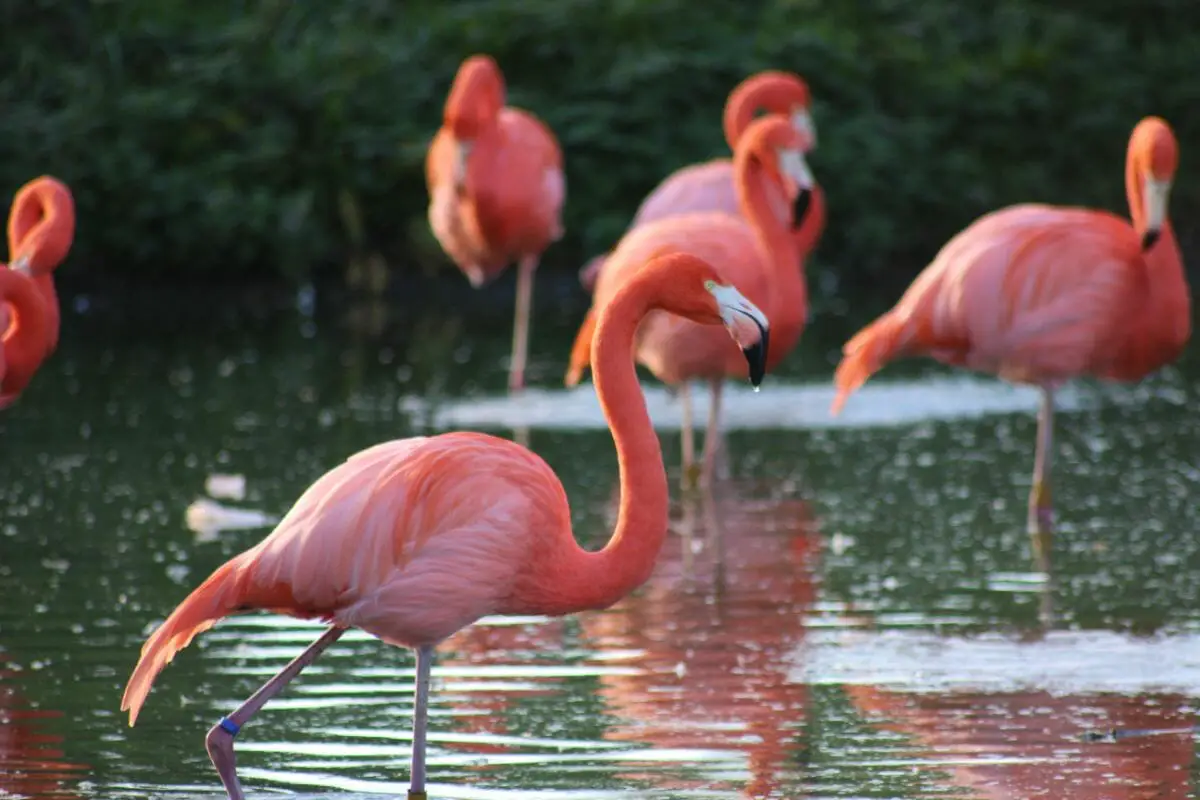
While they are not a two-legged long-distance walker, bears will walk on their hind legs from time to time.
They might do that while they are searching for food like fruits or hives that are up on trees or when examining their surrounding area.
Moreover, there might be different types of bears living in our world, from grizzly bears to polar bears, but all of them have the ability to walk on two legs.
Some of them are also very cute and seemingly innocent but rest assured that they have the instincts of predators, especially when they are out in the wild.
So, if you ever come across a bear while you are out in the woods, don’t try to befriend it!
10. Emus
Emus are another one of the birds in this list, like flamingos, that do not fly. However, these birds live on Australian lands, unlike their pink-colored distant relatives. These mighty two-legged creatures are the second biggest bird species in size, following the ostriches!
They carry great strength in their legs, so much that, if needed, they are capable of breaking down steel barb wire. They even have calf muscles, making them the only bird in the world that has them.
They can also cover big distances with their legs, as each one of their steps typically covers 3 feet in length.
And if that sounds like a big step, let us tell you that when they run, these huge birds can cover more than 9 feet with just a stride!
When threatened, emus employ their legs to defend themselves, as a single one of their leg kicks can have fatal impacts. As a result, there are only a few wild animals that dare to attack fully developed emus.
11. Pangolins
Giant Pangolins are fascinating beings that look like a cross between anteaters and armadillos, with a body structure that might make you think there’s no way they’re walking on their two legs.
Pangolins are one of those animals that might move faster than sloths, but they still move at a relatively slow pace. Even so, they can stand up on their two back legs and waddle small distances, and they typically use their tail to better balance and keep standing.
They are also nocturnal animals and when it’s midnight, they abandon their underground tunnels to search for food by also employing their sense of smell.
Conclusion
There you have it; another list of animals that do something unique, which, in this case, is walking using two legs. Some of them were obvious, others you might have heard for the first time, but either way, share this information with your family and test their knowledge!
As part of zoology, the study of Abipedal animals, those capable of bipedalism, offers fascinating insights into the main form of locomotion. Bipedalism, the ability to move on two legs, is a trait not exclusive to humans.
Several groups of modern species, including mammals and reptiles, display this unique form of locomotion. The basilisk lizard and the wallaby serve as prime examples of bipedal locomotion. While the basilisk is known for its ability to run on water, the wallaby uses its strong hindlegs to hop around its habitat.
Partially bipedal animals like the pangolin, which uses its forelimbs and claws for climbing but can walk bipedally for short distances, demonstrate the versatility of locomotion in animals.
This upright movement is not just a function of habitat but also a response to various needs such as foraging, predation, or escape. In contrast, quadrupedal animals, like many species found in forests or dry habitats, typically use all four limbs for movement but may stand or use their hind legs for specific tasks.
In summary, animals that walk on two legs, from the basilisk lizard that can sprint across the water to the arboreal mammals that shuffle through the treetops, reveal a rich tapestry of evolutionary adaptation.
Biologists and researchers continue to explore this intriguing aspect of animal behavior, shedding light on the myriad ways creatures have adapted to their environments using bipedal or partially bipedal movement.
FAQs
How many animals only have 2 legs?
Very few animals have only two legs as their natural structure. Humans are the primary example of a species that exclusively uses two legs for walking.
What is it called when an animal can walk on 2 and 4 legs?
When an animal can walk on both two and four legs, this ability is referred to as “facultative bipedalism.” Animals like bears and gorillas exhibit this behavior, walking on all fours but standing or walking on two legs for specific tasks.
What animal has two pairs of legs?
Animals with two pairs of legs, meaning four legs in total, include most mammals, reptiles, and amphibians. This is the standard limb arrangement for a vast majority of terrestrial vertebrates, aiding in mobility and balance.
- What Should I Do If A Koala Bites Me? Safety Guide - 2024-05-30
- Are Kangaroos Born Without Hind Legs? A Fascinating Journey - 2024-05-30
- Animals That Look Like Squirrels - 2024-05-30


